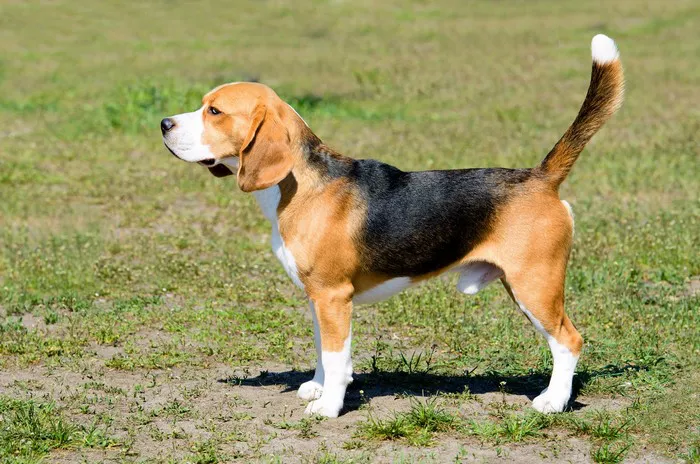Snoopy, the iconic white-and-black dog from Charles M. Schulz’s Peanuts comic strip, has captured hearts worldwide since his debut in 1950. While many recognize him as a lovable, imaginative character, fewer know that his breed—the Beagle—plays a crucial role in shaping his personality and adventures. This article explores why Schulz chose a Beagle as Snoopy’s breed, diving into the Beagle’s history, traits, and cultural significance, while also analyzing how these elements align with Snoopy’s fictional identity.
The Beagle: A Breed with Rich History
Origins and Purpose
The Beagle, known as the “Migru Lie Tu Quan” in Chinese, originated in England as a scent hound bred for hunting small game, particularly rabbits. Its name likely derives from the French term be’geule, referring to the breed’s distinctive baying howl. By the 19th century, Beagles became popular among British hunters for their compact size, stamina, and keen sense of smell—traits that made them ideal for tracking prey through dense terrain.
Physical and Behavioral Traits
Beagles are small to medium-sized dogs with a muscular build, droopy ears, and a short coat often marked with white, black, and tan patches. Their expressive eyes and wagging tails exude friendliness, while their intelligence and curiosity drive their playful nature. Historically, their pack-oriented behavior made them excellent companions for group hunting, a trait that translates into their modern reputation as social, family-friendly pets.
Snoopy’s Creation: Why a Beagle?
Schulz’s Inspiration
Charles M. Schulz, the creator of Peanuts, grew up with a black-and-white dog named Spike, a mixed breed with Beagle-like features. While Spike wasn’t a purebred Beagle, his mischievous personality and loyalty influenced Schulz’s vision for Snoopy. The choice of a Beagle, however, was deliberate: Schulz wanted a breed that embodied both approachability and a touch of quirkiness. The Beagle’s expressive face and compact size made it visually appealing for comic strips, while its hunting heritage subtly mirrored Snoopy’s imaginative adventures.
Symbolism of the Beagle
Everyman Appeal: Beagles are not elite show dogs; they are relatable, working-class animals. This aligned with Schulz’s goal to create a character that resonated with ordinary people. Snoopy’s daydreams of being a World War I flying ace or a novelist reflect the Beagle’s adaptability and boundless imagination.
Contrast with Reality: Despite being a dog, Snoopy often rejects his canine identity—walking upright, typing novels, and even adopting a “Joe Cool” persona. This irony highlights the Beagle’s dual nature: a skilled hunter with a playful, almost human-like charm.
Beagle Traits in Snoopy’s Personality
Curiosity and Adventure
Beagles are natural explorers, driven by their scenting instincts. Snoopy’s escapades—whether scouting with Woodstock (Beagle Scout Adventures) or embarking on imaginary quests—mirror this trait. In Peanuts, Snoopy’s red doghouse becomes a spaceship, a wartime bunker, or a novelist’s den, showcasing his relentless curiosity.
Loyalty and Social Nature
Beagles thrive in packs, and Snoopy’s relationships with Charlie Brown, Woodstock, and the Peanuts gang reflect this social instinct. Despite his aloofness, Snoopy remains fiercely loyal to Charlie Brown, even if he occasionally forgets his owner’s name—a humorous nod to the Beagle’s independent streak.
Humor and Expressiveness
The Beagle’s droopy ears and soulful eyes make it inherently expressive—a quality Schulz amplified through Snoopy’s silent “thought bubbles.” Unlike other characters, Snoopy rarely speaks aloud; instead, his emotions and ideas are conveyed through exaggerated facial expressions and physical comedy, a technique that aligns with the Beagle’s animated demeanor.
Cultural Impact: How Snoopy Redefined the Beagle’s Image
From Hunter to Pop Culture Icon
Before Peanuts, Beagles were primarily associated with hunting. Snoopy’s global fame transformed public perception, turning the breed into a symbol of creativity and resilience. Merchandise like plush toys (e.g., the Snoopy Beach Beagle collectible) and themed events (e.g., Singapore’s Festive Wild-erland) further cemented the Beagle’s status as a cultural icon.
Educational and Philanthropic Roles
Snoopy’s Beagle identity has also been leveraged for educational campaigns. For instance, Mandai Wildlife Reserve’s Beagle Scouts Adventure uses Snoopy to teach children about wildlife conservation, blending the breed’s playful image with environmental advocacy.
The Beagle’s Legacy in Modern Media
Snoopy’s success inspired countless fictional Beagles, from Disney’s Lady and the Tramp to Shiloh. His influence extends beyond comics:
Technology: Japanese brands have created Beagle-themed accessories like phone cable protectors (Snoopy咬线器), combining practicality with nostalgia.
Tourism: Theme parks like Peanuts-themed zones in Minnesota and Singapore attract fans eager to engage with Snoopy’s Beagle persona.
Conclusion
Snoopy’s identity as a Beagle is no accident. Schulz’s choice reflects the breed’s historical versatility, expressive charm, and relatable quirks—qualities that made Snoopy a timeless character. By blending the Beagle’s real-world traits with imaginative storytelling, Peanuts transformed a humble hunting dog into a global symbol of creativity, loyalty, and adventure. Whether typing novels on his doghouse or leading scout troops, snoopy proves that even a small Beagle can leave an indelible paw print on the world.
Related Topics:
WHY DOES MY BEAGLE SIT AND STARE AT ME?
WHY DOES MY BEAGLE PUPPY BITE SO MUCH?
WILL MY BEAGLE EVER CALM DOWN?


